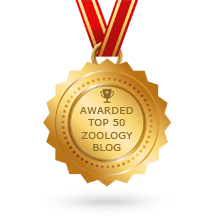 I am lucky enough to own a first edition 1889 copy of The Savage World: a complete natural history of the world’s creatures. This is a mighty tome. For those who have never seen a copy, I can give you very good clue to what it resembles, and that is a breeze block; it is that big and heavy. Of course it does have better pictures than a lump of building material.
I am lucky enough to own a first edition 1889 copy of The Savage World: a complete natural history of the world’s creatures. This is a mighty tome. For those who have never seen a copy, I can give you very good clue to what it resembles, and that is a breeze block; it is that big and heavy. Of course it does have better pictures than a lump of building material.Aside from its potential use as a hefty doorstop, it does give a glimpse into the natural world of the late Victorians. As you may imagine, some animals known today do not feature in it; the Okapi was still to be found, as was the mountain gorilla. But it isn’t what’s missing that I find interesting; rather it is the animals that were still current at the time the book was written, and what if anything we can learn from them.
The first animal to look at is one of my favourites, the great auk; the following is what The Savage World has to say about that bird.
‘The spectacled auk or great auk (Alca impennis) belongs to northern-most Europe. When it is the water it is almost impossible to pursue it quickly enough to get within shooting rang
 e, but like the albatross it can be caught with a hook. It is rapidly becoming extinct and, in spite of the extreme high price which either the bird or its eggs command, the museums of the world contain but 34 birds and but 42 eggs. Collections of the bird’s eggs are quite important to naturalists, but the objects sought by THE LIVING WORLD forbid any discussion of so large a theme. The spectacled auk is black above and white below; around and below the eyes are white markings (which give the auk its popular name) and the small wings or flippers are bordered with white on the upper arm’
e, but like the albatross it can be caught with a hook. It is rapidly becoming extinct and, in spite of the extreme high price which either the bird or its eggs command, the museums of the world contain but 34 birds and but 42 eggs. Collections of the bird’s eggs are quite important to naturalists, but the objects sought by THE LIVING WORLD forbid any discussion of so large a theme. The spectacled auk is black above and white below; around and below the eyes are white markings (which give the auk its popular name) and the small wings or flippers are bordered with white on the upper arm’Bizarrely, despite the fact that this book is from 1889, it appears that the author was unaware that the last known great auk went to meet its maker in 1844, and by the time of the book’s publication the type had long been extinct. That said, there were a few supposed sightings off Lofoten isles in the 1930s but these are widely suspected to be sightings of king penguins that had been released in the area at around the same time.


















1 comment:
It makes one wonder, just how many species of birds, butterflies and other creatures would still be around today, if the Victorians had NOT been such avid naturalist's.
I don't recall the details now, but many years ago I read a book by a Victorian naturalist who stated rather proudly, that he had located the last known pair of a certain small bird and SHOT THEM for his collection.
Post a Comment